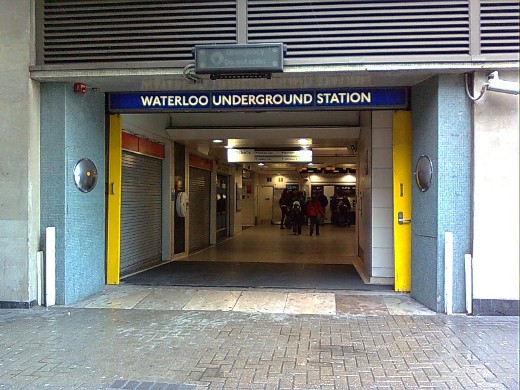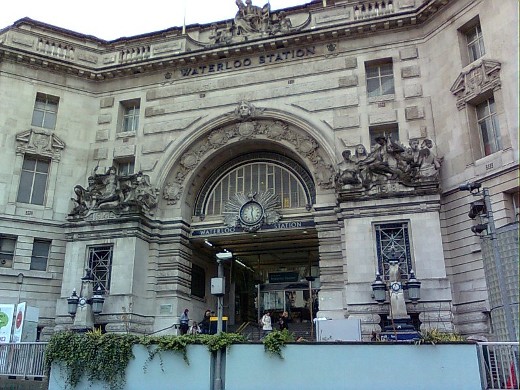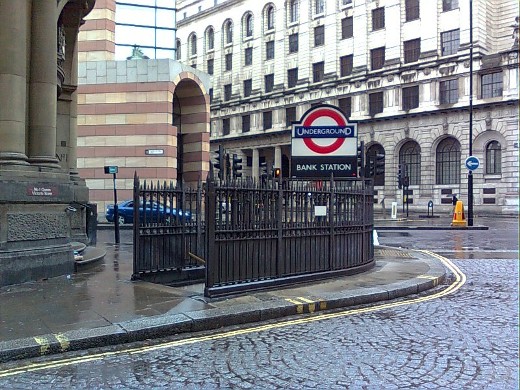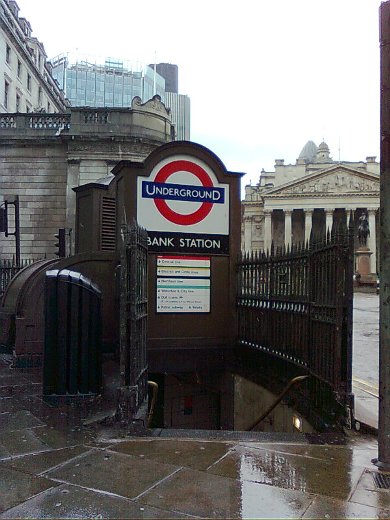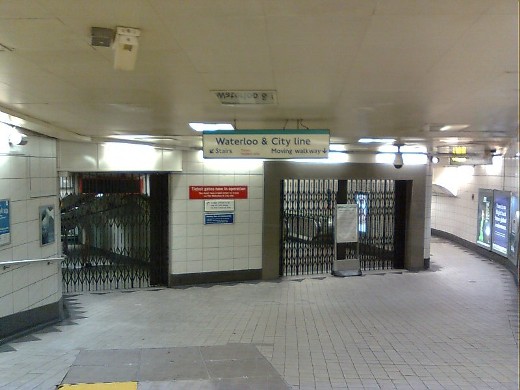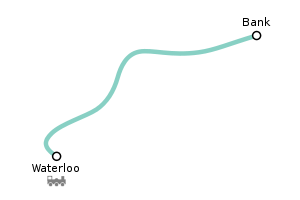
The Waterloo & City Line, otherwise known as the Drain, opened in 1898. It serves only the two stations Waterloo and Bank, and is wholly in tunnel and physically isolated from all other railways. It takes four minutes to travel the 1.5 miles / 2.4 km from end to end. It was the second electric tube railway to open in London, after the City and South London Railway which is now part of the Northern line. It was under separate management until 1994 when London Underground took over the line from British Rail.
Waterloo station is served by four Underground lines and is the busiest of all the Underground stations and the one with the most escalators. Bank station was originally called City station being renamed in 1940. It is now served by three Underground lines and the Docklands Light Railway, and is interlinked with Monument station giving easy access to two more Underground lines. Bank station has many stepped entrances connected underground by a mass of tunnels. The Waterloo & City line trains are reached by way of a moving walkway, one of only two in the Underground system.
The road walk between the two stations included a short walk along the Thames and across the beautiful Southwark Bridge. It was difficult to follow the line closely and the distance walked was 0.2 miles longer than the Tube line underneath, being 1.7 miles in total.
